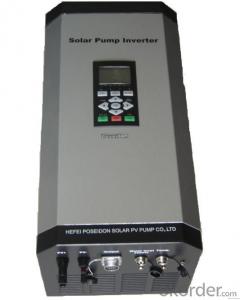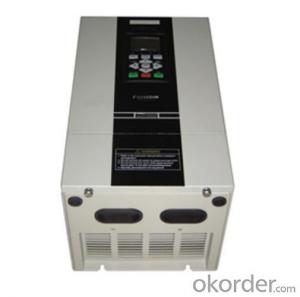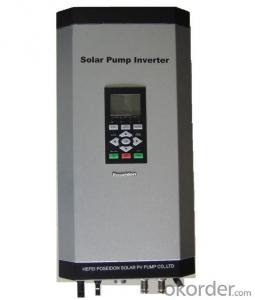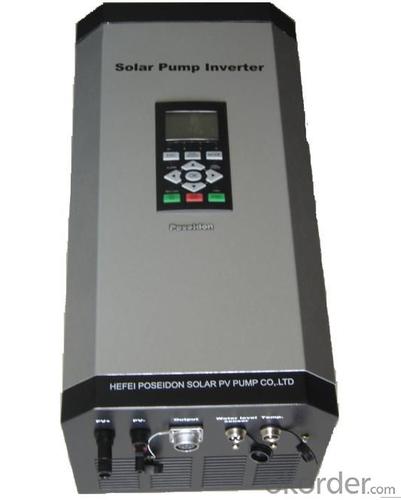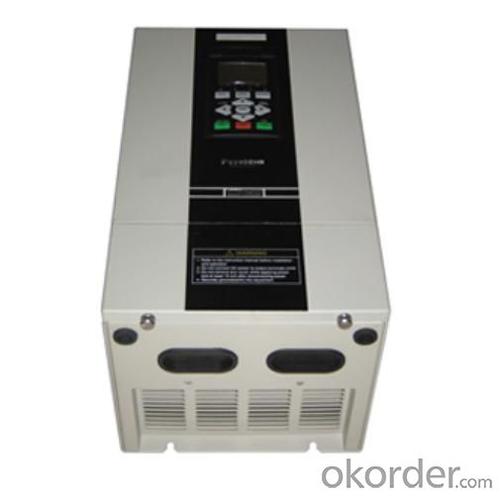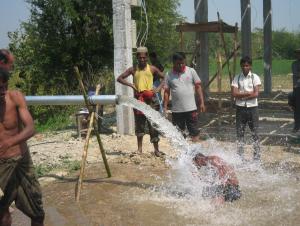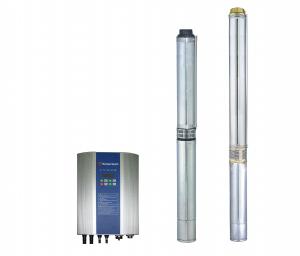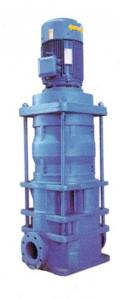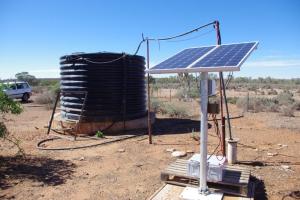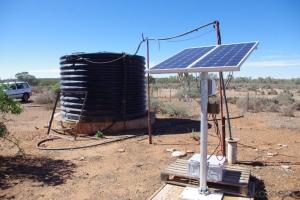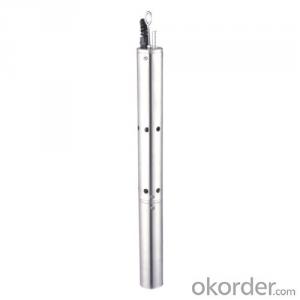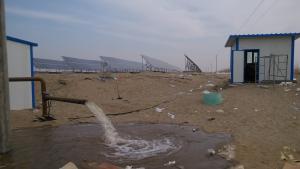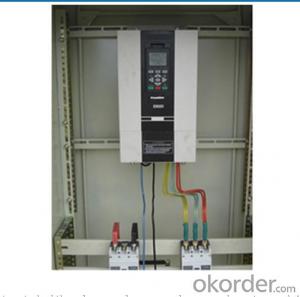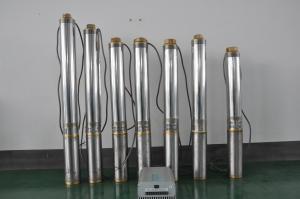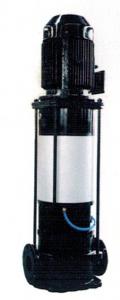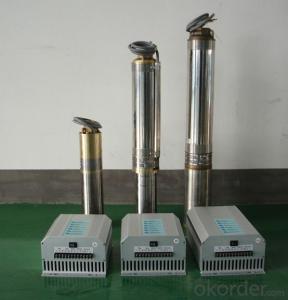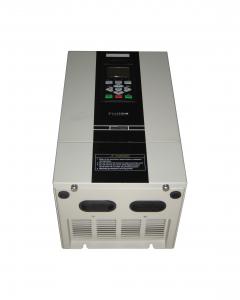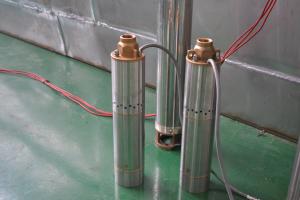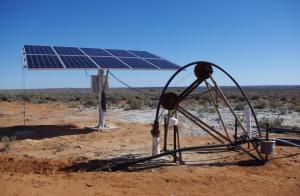Large Pond Solar Pump FCPM1100L Inverter
- Loading Port:
- China Main Port
- Payment Terms:
- TT OR LC
- Min Order Qty:
- -
- Supply Capability:
- -
OKorder Service Pledge
Quality Product, Order Online Tracking, Timely Delivery
OKorder Financial Service
Credit Rating, Credit Services, Credit Purchasing
You Might Also Like
Solar pump inverter FCPM1100L Product Description:
Solar water pumping system is constructed with solar panel array,solar pump inverter and AC water pump, DC current produced from solar panel will be delivered to solar pump inverter,and it will convert it into AC current to drive water pump,and will automatically regulate output frequency according to sun radiance intensity,maximally realize MPPT tracking function.
Features
Adopting the proposed dynamic VI maximum power point tracking (MPPT) control method, with fast response, and reliable operation, achieves efficiency of 99%.
Designed with variable frequency driver, greatly improves efficiency
Extremely high efficiency
Digital mode control, with automatic operation and manual operation mode options
Complete protection functions
Adopts intelligent IPM module, with high reliability
LCD display and operation panel, in real time presents operating data
Optional for water level measurement and control circuit
Applicable for general ACC pumps, like centrifugal pump, piston pump etc.
Independent intellectual property; Highly effective, the redundant reliability, exempts the maintenance and the long life.
The pumps are soft started, fully protected.
No batteries are used. So better Sunlight, more water.
Datasheet.
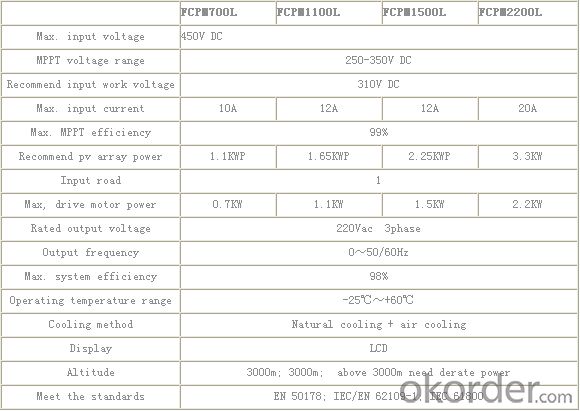
- Q: Can a solar pump be used in areas with high electricity costs?
- Yes, a solar pump can be a cost-effective solution for areas with high electricity costs. Solar pumps are powered by sunlight, eliminating the need for grid electricity. By harnessing renewable energy, they provide a sustainable and affordable alternative, helping reduce dependence on expensive electricity sources. Additionally, solar pumps require minimal maintenance and have a long lifespan, making them a viable option for areas with high electricity costs.
- Q: Can a solar pump be used for fire fighting purposes?
- Yes, a solar pump can be used for fire fighting purposes. Solar pumps are capable of providing a reliable and renewable source of power to run water pumps for fire suppression. They can be an effective solution, especially in remote areas where grid electricity may not be accessible or during power outages. However, the specific application and requirements should be considered to ensure the solar pump's capacity and performance meet the needs of fire fighting activities.
- Q: Can solar pumps be used for water supply in schools or educational institutions?
- Yes, solar pumps can be used for water supply in schools or educational institutions. Solar pumps are a sustainable and cost-effective solution that can provide a reliable source of water for various purposes such as drinking, sanitation, and irrigation. They are especially beneficial in areas with limited access to electricity or unreliable power supply. Additionally, solar pumps require minimal maintenance and have a long lifespan, making them suitable for educational institutions that aim to promote environmental sustainability and resource conservation.
- Q: Can a solar pump be used for solar water heating systems?
- No, a solar pump cannot be used for solar water heating systems. While both solar pumps and solar water heating systems use solar energy as a power source, they serve different purposes. A solar pump is specifically designed to pump water from a well or other water source using solar energy. It is commonly used for irrigation, water supply in remote areas, or circulation of water in swimming pools. On the other hand, a solar water heating system uses solar energy to heat water for domestic or commercial use. It typically consists of solar collectors that absorb sunlight and transfer the heat to water, which is then stored in a tank for later use. These systems do not require a pump to circulate the water, as the heat transfer occurs naturally through convection. Therefore, while both solar pumps and solar water heating systems harness solar energy, they have different functions and cannot be used interchangeably.
- Q: Are there any government incentives or subsidies for using solar pumps?
- Yes, there are government incentives and subsidies available for using solar pumps. Many governments around the world recognize the importance of promoting renewable energy sources like solar power and have implemented various programs and incentives to encourage the adoption of solar pumps. One common form of incentive is the provision of tax credits or rebates for individuals or businesses that invest in solar pump systems. These credits or rebates can significantly reduce the upfront costs of purchasing and installing solar pumps, making them more affordable and attractive to consumers. Some governments also offer grants or subsidies specifically targeted at promoting the use of solar pumps in certain sectors or regions. These grants can help offset the costs of purchasing and installing solar pump systems, making them more accessible to farmers, rural communities, or areas with limited access to electricity. Additionally, some governments have implemented net metering policies, which allow individuals or businesses with solar pumps to sell excess electricity generated back to the grid. This can result in significant savings on electricity bills or even generate additional income for the system owner. It is important to note that the availability and specifics of these incentives and subsidies can vary from country to country and even within different regions of the same country. Therefore, it is advisable to check with the local government or relevant authorities to get accurate and up-to-date information on the specific incentives and subsidies available for using solar pumps in a particular location.
- Q: Can a solar pump be used for water supply in hotels or resorts?
- Yes, a solar pump can be used for water supply in hotels or resorts. Solar pumps are efficient and environmentally friendly options to provide water supply in remote locations. They can effectively pump and distribute water for various purposes such as irrigation systems, swimming pools, and general water supply needs, making them suitable for use in hotels and resorts. Additionally, solar pumps can operate independently from the grid, reducing energy costs and dependence on conventional power sources.
- Q: Can a solar pump be used for agricultural applications?
- Solar pumps are a viable option for agricultural purposes. They serve as an excellent alternative to traditional pumps that rely on fossil fuel-powered engines or electricity from the grid. Specifically, they are highly suitable for agricultural use in areas with ample sunlight and limited access to electricity. Various agricultural applications can benefit from solar pumps, including irrigation, livestock watering, and crop spraying water supply. These pumps offer remarkable efficiency, cost-effectiveness, and environmental friendliness. By harnessing solar energy, they eliminate the need for expensive fuel or electricity, consequently reducing operational costs for farmers. Moreover, solar pumps provide a consistent and dependable water supply, ensuring adequate irrigation for crops even in remote or off-grid locations. Their installation is simple, maintenance requirements are minimal, and their lifespan is long, making them a practical solution for agricultural needs. In addition to these advantages, solar pumps contribute to sustainable farming practices by diminishing carbon emissions and reducing reliance on non-renewable energy sources. Farmers can also benefit from government incentives and subsidies that are often available for adopting solar-powered equipment. To summarize, a solar pump is an exceptional choice for agricultural applications due to its efficiency, cost-effectiveness, reliability, and environmental benefits. It encourages sustainable farming practices and offers a feasible solution for farmers facing limited access to electricity or high fuel costs.
- Q: How does a solar pump help in reducing reliance on grid electricity?
- A solar pump reduces reliance on grid electricity by utilizing solar energy to power the pump, eliminating the need for electricity from the grid. This not only reduces the overall electricity consumption but also decreases the reliance on fossil fuel-based power sources, leading to a more sustainable and environmentally friendly solution.
- Q: Can a solar pump be used at night?
- No, a solar pump cannot be used at night because it requires sunlight to generate power and operate efficiently.
- Q: Can a solar pump be used for both residential and commercial purposes?
- Yes, a solar pump can be used for both residential and commercial purposes. Solar pumps are versatile and can be used to meet various water pumping needs, whether it's for households, farms, or commercial buildings. They offer a sustainable and cost-effective solution for both residential and commercial water pumping requirements.
Send your message to us
Large Pond Solar Pump FCPM1100L Inverter
- Loading Port:
- China Main Port
- Payment Terms:
- TT OR LC
- Min Order Qty:
- -
- Supply Capability:
- -
OKorder Service Pledge
Quality Product, Order Online Tracking, Timely Delivery
OKorder Financial Service
Credit Rating, Credit Services, Credit Purchasing
Similar products
Hot products
Hot Searches
Related keywords
